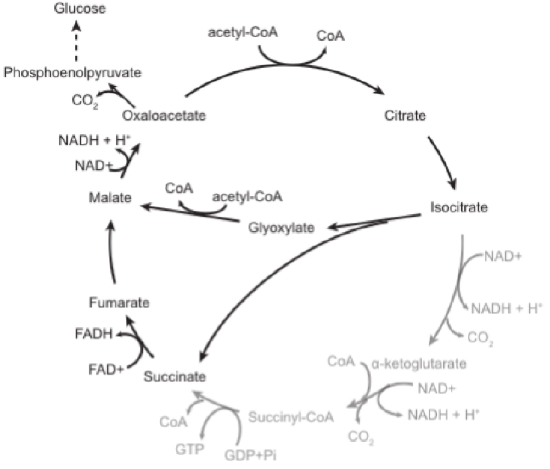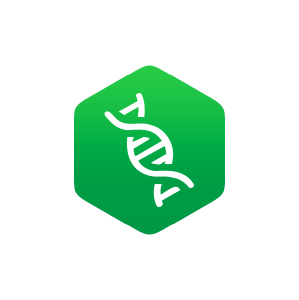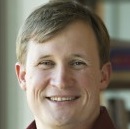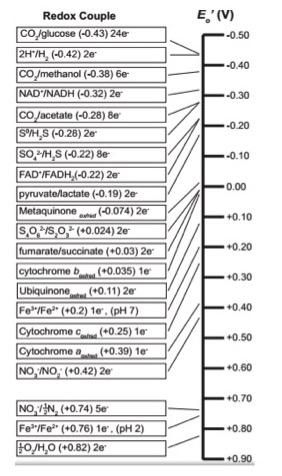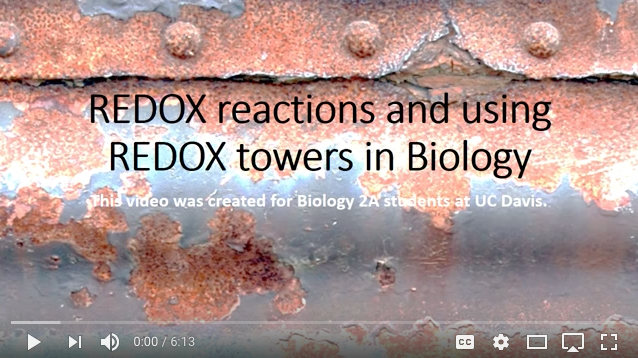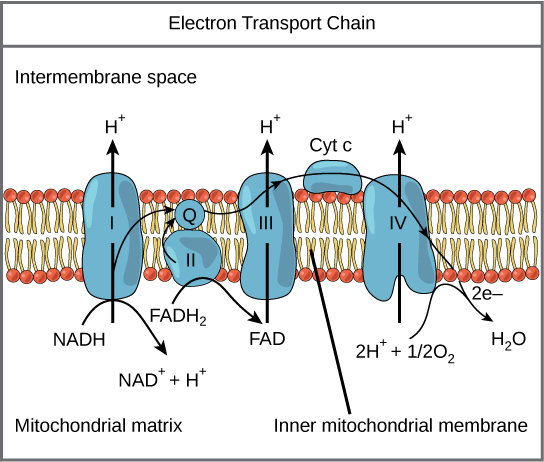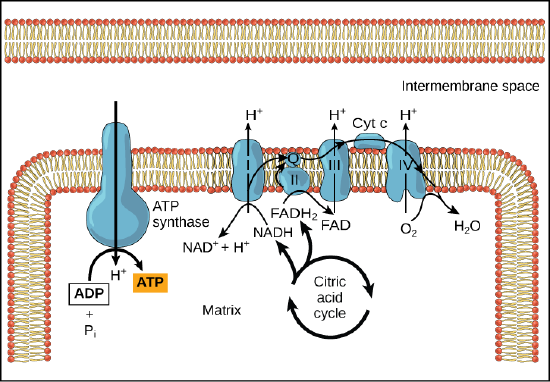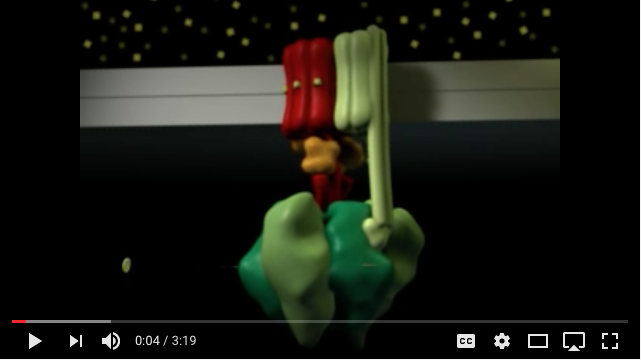Winter_2024_Bis2A_Facciotti_Reading_14
- Page ID
- 122794
Learning Objectives Associated with Winter_2024_Bis2A_Facciotti_Reading_14ME.39 Create a conceptual diagram linking various modes of ATP synthesis with diverse uses of ATP in the cell that highlights the concepts of an "ATP pool" and the role of ATP as a short-term energy carrier. ME.33 Explain the thermodynamic principle underlying the sequential ordering of electron carriers in a functional electron transport chain (ETC). ME.34 Describe the molecular make-up of the components of typical electron transport chains. What are they made of, and how do you expect them to behave and interact with the molecules they encounter? ME.32 Given a series of electron carriers and their associated reduction potentials, be able to generate from scratch a putatively functional electron transport chain (ETC). ME.35 Define and correctly use the term "terminal electron acceptor" and create a list of at least three criteria that apply to most "good" terminal electron acceptors. ME.42 Explain in detail how an electron transport chain (ETC) can harvest usable "cellular energy" by coupling a series of sequential exergonic redox transfers to the active transport of protons across the membrane from low to high concentration (endergonic work). ME.37 Create an energy story describing the enzyme catalyzed active "pumping" of protons across the membrane (remember, track both mass and energy transfers). ME.38 Compare and contrast the roles of protons and electrons in the electron transport chain (ETC). ME.36 Justify the proton gradient derived from ETC activity as a critical component of energy transfer. ME.40 Compare and contrast the three forms of ATP production - substrate-level phosphorylation, oxidative phosphorylation and photophosphorylation. GC.51 Create a concept map explicitly linking all of the following course topics and the concept of redox chemistry: enzymes, thermodynamics, coupled reactions, protein chemistry, and electron transport. |
Introduction to Respiration and Electron Transport Chains
General Overview and Points to Keep In Mind
In the next few modules, we learn about the process of respiration and the roles that electron transport chains play in this process. A definition of the word "respiration" that most people are familiar with is "the act of breathing". When we breathe, we bring air, including molecular oxygen, into our lungs from outside of the body. The oxygen then becomes reduced, and waste products, including the reduced oxygen in the form of water, are exhaled. More generically, some reactant comes into the organism and then gets reduced and leaves the body as a waste product.
This generic idea, in a nutshell, can be applied across biology. Note that oxygen need not always be the compound that is brought in, reduced, and dumped as waste. The compounds onto which the electrons that are "dumped" are known as "terminal electron acceptors." The molecules from which the electrons originate vary across biology (so far, we have only looked at one source - the reduced carbon-based molecule glucose).
In between the original electron source and the terminal electron acceptor are a series of biochemical reactions involving at least one redox reaction. These redox reactions harvest energy for the cell by coupling an exergonic redox reaction to an energy-requiring reaction in the cell. In respiration, a special set of enzymes carry out a linked series of redox reactions that ultimately transfer electrons to the terminal electron acceptor.
These "chains" of redox enzymes and electron carriers are called electron transport chains (ETC). In aerobically respiring eukaryotic cells the ETC is composed of four large, multi-protein complexes embedded in the inner mitochondrial membrane and two small diffusible electron carriers shuttling electrons between them. Electrons pass from enzyme to enzyme through a series of redox reactions. These reactions couple exergonic redox reactions to the endergonic transport of hydrogen ions across the inner mitochondrial membrane. This process contributes to the creation of a transmembrane electrochemical gradient. The electrons passing through the ETC gradually lose potential energy until the point the ETC deposits them on the terminal electron acceptor. The cell typically disposes of the reduced terminal electron as waste. When oxygen acts as the final electron acceptor, the free energy difference of this multi-step redox process is ~ -60 kcal/mol when NADH donates electrons or ~ -45 kcal/mol when FADH2 donates.
Note: Oxygen is not the only terminal electron acceptor in nature
Recall, that we use oxygen as an example of only one of many possible terminal electron acceptors that can be found in nature. The free energy differences associated with respiration in anaerobic organisms will be different.
In prior modules we discussed the general concept of redox reactions in biology and introduced the Electron Tower, a tool to help you understand redox chemistry and to estimate the direction and magnitude of potential energy differences for various redox couples. In later modules, substrate level phosphorylation and fermentation were discussed, and we saw that enzymes could directly couple exergonic redox reactions to the endergonic synthesis of ATP.
We hypothesize these processes to be one of the oldest forms of energy production used by cells. In this section, we discuss the next evolutionary advancement in cellular energy metabolism, oxidative phosphorylation. Foremost recall that oxidative phosphorylation does not imply the use of oxygen. Rather, the term oxidative phosphorylation is used because this process of ATP synthesis relies on redox reactions to generate an electrochemical transmembrane potential the cell can then use to do the work of ATP synthesis.
A Quick Overview of Principles Relevant to Electron Transport Chains
An ETC begins with the addition of electrons, donated from NADH, FADH2 or other reduced compounds. These electrons move through a series of electron transporters, enzymes that are embedded in a membrane, or other carriers that undergo redox reactions. The free energy transferred from these exergonic redox reactions is often coupled to the endergonic movement of protons across a membrane. Since the membrane is an effective barrier to charged species, this pumping results in an unequal accumulation of protons on either side of the membrane. This "polarizes" or "charges" the membrane, with a net positive (protons) on one side of the membrane and a negative charge on the other side of the membrane. The separation of charge creates an electrical potential. In addition, the accumulation of protons also causes a pH gradient known as a chemical potential across the membrane. Together these two gradients (electrical and chemical) are called an electro-chemical gradient.
Review: The Electron Tower
Since redox chemistry is so central to the topic we begin with a quick review of the table of reduction potential - sometimes called the "redox tower" or "electron tower". You may hear your instructors use these terms interchangeably. As we discussed in previous modules, all kinds of compounds can take part in biological redox reactions. Making sense of all of this information and ranking potential redox pairs can be confusing. We have developed a tool to rate redox half reactions based on their reduction potentials or E0' values. Whether a particular compound can act as an electron donor (reductant) or electron acceptor (oxidant) depends on what other compound it is interacting with. The redox tower ranks a variety of common compounds (their half reactions) from most negative E0', compounds that readily get rid of electrons, to the most positive E0', compounds most likely to accept electrons. The tower organizes these half reactions based on the ability of electrons to accept electrons. In addition, in many redox towers, each half reaction is written by convention with the oxidized form on the left followed by the reduced form to its right. The two forms may be either separated by a slash, for example, we write the half reaction for the reduction of NAD+ to NADH: NAD+/NADH + 2e-, or by separate columns. We show an electron tower below.
Figure 1. A common biological "redox tower"
Note
Use the redox tower above as a reference guide to orient you as to the reduction potential of the various compounds in the ETC. Redox reactions may be either exergonic or endergonic depending on the relative redox potentials of the donor and acceptor. Also remember there are many different ways of looking at this conceptually; this type of redox tower is just one way.
Note: Language shortcuts reappear
In the redox table above some entries seem to be written in unconventional ways. For instance Cytochrome cox/red. There only appears to be one form listed. Why? This is another example of language shortcuts (likely because someone was too lazy to write cytochrome twice) that can confuse - particularly to students. We could rewrite the notation above as Cytochrome cox/Cytochrome cred to show that the cytochrome c protein can exist in either and oxidized state Cytochrome cox or reduced state Cytochrome cred.
Review Redox Tower Video
For a short video on how to use the redox tower in redox problems click here. This video was made by Dr. Easlon for Bis2A students.
Using the redox tower: A tool to help understand electron transport chains
By convention, we write the tower half reactions with the oxidized form of the compound on the left and the reduced form on the right. Notice that compounds such as glucose and hydrogen gas are excellent electron donors and have very low reduction potentials E0'. Compounds, such as oxygen and nitrite, whose half reactions have relatively high positive reduction potentials (E0') make we find good electron acceptors at the opposite end of the table.
Example: Menaquinone
Let's look at menaquinoneox/red. This compound sits in the middle of the redox tower with a half-reaction E0' value of -0.074 eV. Menaquinoneox can spontaneously (ΔG<0) accept electrons from reduced forms of compounds with lower half-reaction E0'. Such transfers form menaquinonered and the oxidized form of the original electron donor. In the table above, examples of compounds that could act as electron donors to menaquinone include FADH2, an E0' value of -0.22, or NADH, with an E0' value of -0.32 eV. Remember, the reduced forms are on the right-hand side of the redox pair.
Once menaquinone has been reduced, it can now spontaneously (ΔG<0) donate electrons to any compound with a higher half-reaction E0' value. Electron acceptors include cytochrome box with an E0' value of 0.035 eV; or ubiquinoneox with an E0' of 0.11 eV. Remember that the oxidized forms lie on the left side of the half reaction.
Electron Transport Chains
An electron transport chain, or ETC, is composed of a group of protein complexes in and around a membrane that help energetically couple a series of exergonic/spontaneous red/ox reactions to the endergonic pumping of protons across the membrane to generate an electrochemical gradient. This electrochemical gradient creates a free energy potential that we call a proton motive force whose energetically "downhill" exergonic flow can later be coupled to a variety of cellular processes.
ETC overview
Step 1: Electrons enter the ETC from an electron donor, such as NADH or FADH2, which are generated during a variety of catabolic reactions, including those associated glucose oxidation. Depending on the number and types of electron carriers of the ETC being used by an organism, electrons can enter at a variety of places in the electron transport chain. Entry of electrons at a specific "spot" in the ETC depends upon the respective reduction potentials of the electron donors and acceptors.
Step 2: After the first red/ox reaction, the initial electron donor will become oxidized and the electron acceptor will become reduced. The difference in red/ox potential between the electron acceptor and donor is related to ΔG by the relationship ΔG = -nFΔE, where n = the number of electrons transferred and F = Faraday's constant. The larger a positive ΔE, the more exergonic the red/ox reaction is.
Step 3: If sufficient energy is transferred during an exergonic red/ox step, the electron carrier may couple this negative change in free energy to the endergonic process of transporting a proton from one side of the membrane to the other.
Step 4: After usually multiple red/ox transfers, the electron is delivered to a molecule known as the terminal electron acceptor. With humans, the terminal electron acceptor is oxygen. However, there are many, many, many other possible electron acceptors in nature; see below.
Note: NADH AND FADH2 ARE NOT THE ONLY ELECTRON DONORS
Electrons entering the ETC do not have to come from NADH or FADH2. Many other compounds can serve as electron donors; the only requirements are (1) that there is an enzyme that can oxidize the electron donor and then reduce another compound, and (2) that the ∆E0' is positive (e.g., ΔG<0). Even a small amount of free energy transfers can add up. For example, there are bacteria that use H2 as an electron donor. This is not too difficult to believe because the half reaction 2H+ + 2 e-/H2 has a reduction potential (E0') of -0.42 V. If these electrons are eventually delivered to oxygen, then the ΔE0' of the reaction is 1.24 V, which corresponds to a large negative ΔG (-ΔG). Alternatively, there are some bacteria that can oxidize iron, Fe2+ at pH 7 to Fe3+ with a reduction potential (E0') of + 0.2 V. These bacteria use oxygen as their terminal electron acceptor, and, in this case, the ΔE0' of the reaction is approximately 0.62 V. This still produces a -ΔG. The bottom line is that, depending on the electron donor and acceptor that the organism uses, a little or a lot of energy can be transferred and used by the cell per electrons donated to the electron transport chain.
What are the complexes of the ETC?
ETCs comprise a series (at least one) of membrane-associated red/ox proteins or (some are integral) protein complexes (complex = more than one protein arranged in a quaternary structure) that move electrons from a donor source, such as NADH, to a final terminal electron acceptor, such as oxygen. This specific donor/terminal acceptor pair is the primary one used in human mitochondria. Each electron transfer in the ETC requires a reduced substrate as an electron donor and an oxidized substrate as the electron acceptor. In most cases, the electron acceptor is a member of the enzyme complex itself. Once the complex is reduced, the complex can serve as an electron donor for the next reaction.
How do ETC complexes transfer electrons?
As previously mentioned, the ETC is composed of a series of protein complexes that undergo a series of linked red/ox reactions. These complexes are in fact multi-protein enzyme complexes referred to as oxidoreductases or simply, reductases. The one exception to this naming convention is the terminal complex in aerobic respiration that uses molecular oxygen as the terminal electron acceptor. That enzyme complex is referred to as an oxidase. Red/ox reactions in these complexes are typically carried out by a non-protein moiety called a prosthetic group. The prosthetic groups are directly involved in the red/ox reactions being catalyzed by their associated oxidoreductases. In general, these prosthetic groups can be divided into two general types: those that carry both electrons and protons and those that only carry electrons.
Note:
This use of prosthetic groups by members of ETC is true for all of the electron carriers with the exception of quinones, which are a class of lipids that can directly be reduced or oxidized by the oxidoreductases. Both the Quinone(red) and the Quinone(ox) forms of these lipids are soluble within the membrane and can move from complex to complex to shuttle electrons.
The electron and proton carriers
- Flavoproteins (Fp), these proteins contain an organic prosthetic group called a flavin, which is the actual moiety that undergoes the oxidation/reduction reaction. FADH2 is an example of an Fp.
- Quinones are a family of lipids, which means they are soluble within the membrane.
- We also note that we consider NADH and NADPH electron (2e-) and proton (2 H+) carriers.
Electron carriers
- Cytochromes are proteins that contain a heme prosthetic group. The heme can carry a single electron.
- Iron-Sulfur proteins contain a nonheme iron-sulfur cluster that can carry an electron. We often abbreviate the prosthetic group as Fe-S
Aerobic versus anaerobic respiration
We humans use oxygen as the terminal electron acceptor for the ETCs in our cells. This is also the case for many of the organisms we intentionally and frequently interact with (e.g. our classmates, pets, food animals, etc). We breathe in oxygen; Our cells take it up and transport it into the mitochondria, where it becomes the final acceptor of electrons from our electron transport chains. We call the process where oxygen is the terminal electron acceptor aerobic respiration.
While we may use oxygen as the terminal electron acceptor for our respiratory chains, this is not the only mode of respiration on the planet. The more general processes of respiration evolved when oxygen was not a major component of the atmosphere. As a result, many organisms can use a variety of compounds, including nitrate (NO3-), nitrite (NO2-), even iron (Fe3+) as terminal electron acceptors. When oxygen is NOT the terminal electron acceptor, we refer the process to as anaerobic respiration. Therefore, respiration or oxidative phosphorylation does not require oxygen at all; It requires a compound with a high enough reduction potential to act as a terminal electron acceptor, accepting electrons from one complex within the ETC.
The ability of some organisms to vary their terminal electron acceptor provides metabolic flexibility and can ensure better survival if any given terminal acceptor is in limited supply. Think about this: in the absence of oxygen, we die; but other organisms can use a different terminal electron acceptor when conditions change to survive.
Possible NB Discussion  Point
Point
Nature has figured out how to use different molecules as terminal electron acceptors of ETCs. Yet humans seem limited to using only oxygen. Can you offer any hypotheses why humans have not evolved to use multiple different terminal electron acceptors? Why do you think it might be advantageous for an organism to use oxygen as a sole terminal electron acceptor?
A generic example: A simple, two-complex ETC
The figure below depicts a generic electron transport chain, composed of two integral membrane complexes; Complex I(ox) and Complex II(ox). A reduced electron donor, designated DH (such as NADH or FADH2) reduces Complex I(ox), giving rise to the oxidized form D (such as NAD+ or FAD+). Simultaneously, a prosthetic group within Complex I is now reduced (accepts the electrons). In this example, the red/ox reaction is exergonic and the free energy difference is coupled by the enzymes in Complex I to the endergonic translocation of a proton from one side of the membrane to the other. The net result is that one surface of the membrane becomes more negatively charged, because of an excess of hydroxyl ions (OH-), and the other side becomes positively charged because of an increase in protons on the other side. Complex I(red) can now reduce a mobile electron carrier Q, which will then move through the membrane and transfer the electron(s) to the prosthetic group of Complex II(red). Electrons pass from Complex I to Q then from Q to Complex II via thermodynamically spontaneous red/ox reactions, regenerating Complex I(ox), which can repeat the previous process. Complex II(red) then reduces A, the terminal electron acceptor to regenerate Complex II(ox) and create the reduced form of the terminal electron acceptor, AH. In this specific example, Complex II can also translocate a proton during the process. If A is molecular oxygen, AH represents water and the process would be considered being a model of an aerobic ETC. If A is nitrate, NO3-, then AH represents NO2- (nitrite) and this would be an example of an anaerobic ETC.
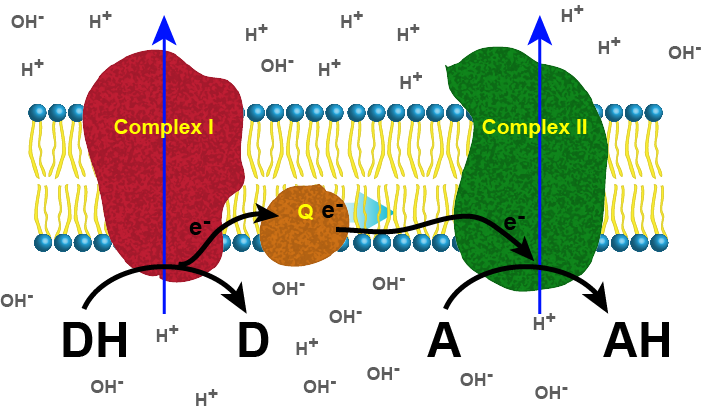
Figure 1. Generic 2 complex electron transport chain. In the figure, DH is the electron donor (donor reduced), and D is the donor oxidized. A is the oxidized terminal electron acceptor, and AH is the final product, the reduced form of the acceptor. As DH is oxidized to D, protons are translocated across the membrane, leaving an excess of hydroxyl ions (negatively charged) on one side of the membrane and protons (positively charged) on the other side of the membrane. The same reaction occurs in Complex II as the terminal electron acceptor is reduced to AH. Attribution: Marc T. Facciotti (original work)
Detailed look at aerobic respiration
The eukaryotic mitochondria have evolved a very efficient ETC. There are four complexes composed of proteins, labeled I through IV depicted in the figure below. The aggregation of these four complexes, together with associated mobile, accessory electron carriers, is called an electron transport chain. This electron transport chain is present in multiple copies in the inner mitochondrial membrane of eukaryotes.
Figure 2. The electron transport chain is a series of electron transporters embedded in the inner mitochondrial membrane that shuttles electrons from NADH and FADH2 to molecular oxygen. In the process, protons are pumped from the mitochondrial matrix to the intermembrane space, and oxygen is reduced to form water.
Complex I
To start, NADH delivers two electrons to the first protein complex. This complex, labeled I in Figure 2, includes flavin mononucleotide (FMN) and iron-sulfur (Fe-S)-containing proteins. FMN, which is derived from vitamin B2, also called riboflavin, is one of several prosthetic groups or cofactors in the electron transport chain. Prosthetic groups are organic or inorganic, nonpeptide molecules bound to a protein that facilitate its function; prosthetic groups include coenzymes, which are the prosthetic groups of enzymes. We also call the enzyme in Complex I NADH dehydrogenase. This protein complex contains 45 individual polypeptide chains. Complex I can pump four hydrogen ions across the membrane from the matrix into the intermembrane space helping to generate and maintain a hydrogen ion gradient between the two compartments separated by the inner mitochondrial membrane.
Q and Complex II
Complex II directly receives FADH2, which does not pass through Complex I. The compound connecting the first and second complexes to the third is ubiquinone (Q). The Q molecule is lipid soluble and freely moves through the hydrophobic core of the membrane. Once reduced, (QH2), ubiquinone delivers its electrons to the next complex in the electron transport chain. Q receives the electrons derived from NADH from Complex I and the electrons derived from FADH2 from Complex II, succinate dehydrogenase. Since these electrons bypass and thus do not energize the proton pump in the first complex, fewer ATP molecules are made from the FADH2 electrons. As we will see in the following section, the number of ATP molecules ultimately obtained is directly proportional to the number of protons pumped across the inner mitochondrial membrane.
Complex III
The third complex is composed of cytochrome b, another Fe-S protein, Rieske center (2Fe-2S center), and cytochrome c proteins; we also call this complex cytochrome oxidoreductase. Cytochrome proteins have a prosthetic group of heme. The heme molecule is like the heme in hemoglobin, but it carries electrons, not oxygen. As a result, the iron ion at its core is reduced and oxidized as it passes the electrons, fluctuating between different oxidation states: Fe2+ (reduced) and Fe3+ (oxidized). The heme molecules in the cytochromes have slightly different characteristics because of the effects of the different proteins binding them, giving slightly different characteristics to each complex. Complex III pumps protons through the membrane and passes its electrons to cytochrome c for transport to the fourth complex of proteins and enzymes (cytochrome c is the acceptor of electrons from Q; however, whereas Q carries pairs of electrons, cytochrome c can accept only one at a time).
Complex IV
The fourth complex is composed of cytochrome proteins c, a, and a3. This complex contains two heme groups (one in each of the two Cytochromes, a, and a3) and three copper ions (a pair of CuA and one CuB in Cytochrome a3). The cytochromes hold an oxygen molecule tightly between the iron and copper ions until it completely reduces the oxygen. The reduced oxygen then picks up two hydrogen ions from the surrounding medium to make water (H2O). The removal of the hydrogen ions from the system contributes to the ion gradient used in the process of chemiosmosis.
Chemiosmosis
In chemiosmosis, the free energy from the series of red/ox reactions just described is used to pump protons across the membrane. The uneven distribution of H+ ions across the membrane establishes both concentration and electrical gradients (thus, an electrochemical gradient), owing to the proton's positive charge and their aggregation on one side of the membrane.
If the membrane were open to diffusion by protons, the ions would tend to diffuse back across into the matrix, driven by their electrochemical gradient. Ions, however, cannot diffuse through the nonpolar regions of phospholipid membranes without the aid of ion channels. Similarly, protons in the intermembrane space can only traverse the inner mitochondrial membrane through an integral membrane protein called ATP synthase (depicted below). This complex protein acts as a tiny generator, turned by transfer of energy mediated by protons moving down their electrochemical gradient. The movement of this molecular machine (enzyme) serves to lower the activation energy of reaction and couples the exergonic transfer of energy associated with the movement of protons down their electrochemical gradient to the endergonic addition of a phosphate to ADP, forming ATP.
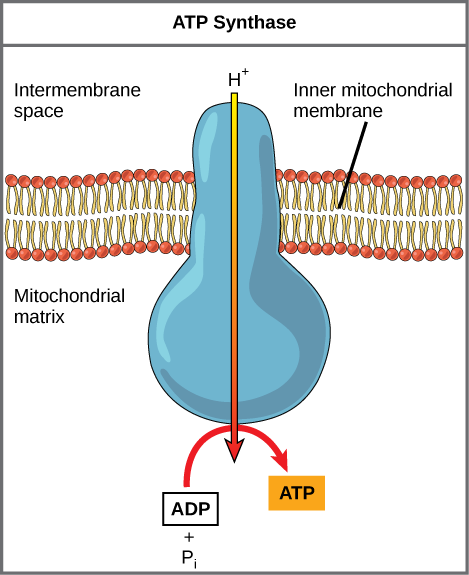
Figure 3. ATP synthase is a complex, molecular machine that uses a proton (H+) gradient to form ATP from ADP and inorganic phosphate (Pi). Credit: modification of work by Klaus Hoffmeier
Possible NB Discussion  Point
Point
Cyanide inhibits cytochrome c oxidase, a component of the electron transport chain. If cyanide poisoning occurs, would you expect the pH of the intermembrane space to increase or decrease? What effect would cyanide have on ATP synthesis? How would this affect the rates of reactions in glycolysis and the TCA cycle?
In healthy cells, chemiosmosis (depicted below) is used to generate 90 percent of the ATP made during aerobic glucose catabolism; it is also the method used in the light reactions of photosynthesis to harness the energy of sunlight in the process of photophosphorylation. Recall that the production of ATP using the process of chemiosmosis in mitochondria is called oxidative phosphorylation and that a similar process can occur in the membranes of bacterial and archaeal cells. The overall result of these reactions is the production of ATP from the energy of the electrons removed originally from a reduced organic molecule like glucose. In the aerobic example, these electrons ultimately reduce oxygen and create water.
Figure 4. In oxidative phosphorylation, the pH gradient formed by the electron transport chain is used by ATP synthase to form ATP in a Gram-bacteria.
Helpful link: How ATP is made from ATP synthase
A Hypothesis for How ETCs May Have Evolved
A proposed link between SLP/fermentation and the evolution of ETCs:
In a previous discussion of energy metabolism, we explored substrate level phosphorylation (SLP) and fermentation reactions. While SLP and fermentation together are perfectly good ways to harvest energy, one byproduct of these reactions is the acidification of the cell. Early cells that used these modes of energy harvested therefore needed to co-evolve mechanisms that helped remove protons accumulated from SLP and fermentation from the cytosol (interior of the cell). One solution to the "proton problem" may have been the evolution of the F0F1-ATPase, a multi-subunit enzyme that translocated protons from the inside of the cell to the outside of the cell by hydrolyzing ATP (see the figure below). This arrangement works as long as small reduced organic molecules are abundant and freely available to generate ATP can through SLP that can "fuel" the business of the cell. However, as these biological processes continue, the small reduced organic molecules will become depleted. The resulting scarcity of fuel, therefore, puts a demand on cells to find alternative mechanisms to harness energy and/or to become more efficient.
In the scheme proposed above, one potential source of "wasted ATP" is its use in the removal of protons from the cell's cytosol; organisms that could find other mechanisms to expel accumulating protons while still preserving ATP could have a selective advantage. We hypothesize that this selective evolutionary pressure potentially led to the evolution of the first membrane-bound proteins that used red/ox reactions as their energy source (depicted in a second picture) to pump out the accumulating protons. Enzymes and enzyme complexes with these properties exist today in the as electron transport complexes like Complex I, the NADH dehydrogenase.
Figure 1. Proposed evolution of an ATP dependent proton translocator
Figure 2. As small reduced organic molecules become limited, organisms that can find alternative mechanisms to remove protons from the cytosol may have an a selective advantage. The evolution of a proton translocator that uses red/ox reactions rather than ATP hydrolysis could substitute for the ATPase.
Continuing with this line of logic, if organisms evolved that could now use red/ox reactions to translocate protons across the membrane they would create an electrochemical gradient, separating both charge (positive on the outside and negative on the inside, creating an electrical potential) and pH (low pH outside, higher pH inside). With excess protons on the outside of the cell membrane, and the F0F1-ATPase no longer consuming ATP to translocate protons, we hypothesize that the electrochemical gradient could then power the F0F1-ATPase "backwards" — that is, to form or produce ATP by using the energy in the charge/pH gradients set up by the red/ox pumps (as depicted below). We call this arrangement an electron transport chain (ETC).
Figure 3. The evolution of the ETC; the combination of the red/ox driven proton translocators coupled to the production of ATP by the F0F1-ATPase.
Note: Extended reading on the evolution of electron transport chains
If you're interested in the the evolution of electron transport chains, check out this more in-depth discussion of the topic at NCBI.
Possible NB Discussion  Point
Point
Dinitrophenol (DNP) is a small chemical that serves to uncouple the flow of protons across the inner mitochondrial membrane to the ATP synthase, making the membrane leaky to protons. People used it until 1938 as a weight-loss drug. What effect would you expect DNP to have on the difference in pH across both sides of the inner mitochondrial membrane? Why do you think this might be an effective weight-loss drug? Why might it be dangerous? Can you think of any scenarios where it is non-harmful, or even beneficial, to uncouple proton flow with ATP synthase?
PRACTICE POST GUIDE
General Practice
3. Why: I continue to encourage you to think about the “big picture” and not get lost in what might seem like unique disconnected lessons (e.g. glycolysis, TCA, respiration/electron transport, and topics from earlier in the course). The bigger integrated picture will ultimately be the most powerful lesson you will/can take from the whole discussion of metabolism - no matter what field/profession(s) you ultimately go into.
How to practice: Cells require more or less energy depending on what they are doing. At rest the rate of ATP consumption will be low while a highly active cell the rate of ATP consumption will be high. What can a cell do to tune energy metabolism in response to demand? Think logically about reasonable hypotheses.
C6H12O6 (s) + 6 O2 (g) → 6 CO2 (g) + 6 H2O (l) + heat Eq 1.
Equation 1 describes the overall redox/combustion reaction we’ve discussed at length. I’ve added a term “heat” to be more specific about how we describe some of the energy associated with these reactions. Of course, you are all aware that some of the energy resides in ATP.
Where is the heat coming from? Does this relate at all to your experience of exercising? Does this provide any hints about how a cell might go about tuning energy production for demand?
If you understand where some of the heat is generated try to propose hypotheses about how you might perturb the system to generate heat - think about how a hibernating animal might stay warm while hibernating.
This exercise helps you practice learning objectives: ME.16 Apply the concept of the “conservation of mass” to metabolism by describing the different forms mass takes as it enters and leaves the cell (e.g. input: reduced molecules like glucose, lipids, proteins, etc. & output: oxidized molecules like CO2, H2O etc.). ME.15 Apply the concept of the "conservation of energy" to central metabolism. Follow energy from "sources" of electrons with relatively low reduction potentials to "sinks" with higher redox potentials, describe the major transfers of energy and how this energy is "stored" at each stage. NOTE: this exercise also primes you to think about the topic of metabolic regulation (the next formal topic for discussion in the course).
4. Why: We are going to continue using redox tables for a few more lectures and so we want to keep practicing how to use them. Key to using them is to actually understand what information is in the table and how it’s organized. This exercise is a bit involved but if you’re still struggling with how to read and use these tables, the physical exercise of breaking down a table and then reconstructing it might be fruitful. This might be particularly useful for those who benefit a lot from visual/tactile experience.
How to practice: We’ve talked and used redox tables at great length. Let’s go back to basics. How are they constructed? What information is imbedded in the tables and what can be learned and interpreted from them?
The suggested exercise is as follows. Take a redox table from lecture or the book and deconstruct it. Or use the table at the end of the document:
Print out the page. Cut out individual cells. Now reassemble it on a flat surface or another piece of paper. Take care to recognize what you are doing. Why is something in the oxidant column? Why reductant? Does it matter? How are you organizing the Eo column - what is your rule for that? In the table below, I’ve added little colored shapes to each row to help you sort and reorganize oxidants and reductants back together (post cutting) - that might be useful.
This exercise helps you practice learning objectives: This is intended to help you solidify some of the learning objectives associated with reading redox tables we saw earlier in the course. The skills, however, nevertheless continue to have relevance.
5. Why: Underlying the whole discussion about electron transport are some fundamental ideas about why nature may have evolved a scheme of sequential redox reactions to harvest energy from electron sources living systems grab from their environments. This is pretty key context for understanding and scaffolding your knowledge of electron transport onto the big story of metabolism
How to practice: In a previous lecture, I showed a movie of a gummy bear getting fully oxidized - there was a lot of energy transferred to the environment in that redox reaction! That electron transfer happened IN ONE STEP. That seemed particularly effective at releasing lots of energy. In lecture, we saw a process by which electrons could “flow” from sugar to oxygen in MULTIPLE STEPS in a biological cell. Why don’t our cells just transfer electrons from sugar directly to oxygen in one step and instead do it in smaller steps?
This exercise helps you practice learning objectives: ME.33 Explain the thermodynamic principle underlying the sequential ordering of electron carriers in a functional electron transport chain (ETC).; ME.42 Explain in detail how an electron transport chain (ETC) can harvest usable "cellular energy" by coupling a series of sequential exergonic redox transfers to the active transport of protons across the membrane from low to high concentration (endergonic work).
6. Why: Few misconceptions about biological systems are more pervasive than the notion that anaerobic respiration and fermentation are equivalent processes. This misconception arises, in part, from a general overemphasis on human health as the reason to study biology and an attempt by instructors and students alike to create memorization-based shortcuts that rob students of understanding (even actually understanding the mammalian physiology they’re trying to memorize). So, rather than succumbing to gimmick that (a) teach you the wrong thing and (b) don’t work to teach the thing they’re intended to help teach, let’s try to actually understand what’s going on. It’s actually an easier thing to do than to memorize the gimmick anyway.
How to practice: Search the internet for the terms “fermentation” and “anaerobic respiration.” You will find many sites that say they are the same. THEY ARE NOT. PERIOD. END OF STORY. This misconception is extremely prevalent and your BIS2A instructors are doing everything they can to stamp it out. Fortunately, deciding to believe the internet instead of your BIS2A instructors and TAs will only cost you points on your BIS2A and future exams in your upper division UC Davis courses. Convince yourself that these are different processes by describing what the key elements are of respiratory processes and fermentative ones. How can you have respiration without oxygen?
This exercise helps you practice learning objectives: ME.34 Describe the molecular make-up of the components of typical electron transport chains. What are they made of, and how do you expect them to behave and interact with the molecules they encounter?; ME.39 Create a conceptual diagram linking various modes of ATP synthesis with diverse uses of ATP in the cell that highlights the concepts of an "ATP pool" and the role of ATP as a short-term energy carrier. - For the second learning objective think about the different ways you can synthesize ATP and how fermentation and respiration can complement one another.
7. Why: This is just reinforcing the idea from exercise 6.
How to practice: So, does cellular respiration require oxygen in all cases? If you said Yes - or are uncomfortable with a “No” answer make sure to re-read the section on anaerobic respiration in the reading. Also pay extra special attention to the next 2 exercises.
This exercise helps you practice learning objectives: Same learning objectives as exercise 6.
8. Why: Electron transport chains play key roles in a cell. Let’s make sure to check out understanding.
How to practice: Write out two important roles of any (aerobic or anaerobic) respiratory electron transport chain? Try to explain it completely enough so that one of your classmates will understand and make sure you practice using the appropriate vocabulary - stay away from using pronouns when at all possible.
This exercise helps you practice learning objectives: ME.34 Describe the molecular make-up of the components of typical electron transport chains. What are they made of, and how do you expect them to behave and interact with the molecules they encounter?; ME.42 Explain in detail how an electron transport chain (ETC) can harvest usable "cellular energy" by coupling a series of sequential exergonic redox transfers to the active transport of protons across the membrane from low to high concentration (endergonic work).; ME.38 Compare and contrast the roles of protons and electrons in the electron transport chain (ETC).; ME.36 Justify the proton gradient derived from ETC activity as a critical component of energy transfer.
9. Why: Let’s practice some of the learning objectives by looking at can example of a microbial anaerobic respiratory system.
How to practice: Below is a figure depicting an anaerobic electron transport chain. Based on what you know about the energetics of how electrons flow between protein complexes involved in electron transport, create a redox tower in which the complexes appear in an energetically sensible order. You do not need to enter specific reduction potentials - you can make up sensible numbers that fit in the bounds dictated by glucose and oxygen. Whatever the numbers make sure that the oxidant and reductant pairs appear in the table in an energetically sensible order. Mark the two possible redox states of complexes Y and Z as: “Complex Y (oxidized form)” or “Complex Y (reduced form)” and “Complex Z (oxidized form)” or “Complex Z (reduced form)”.
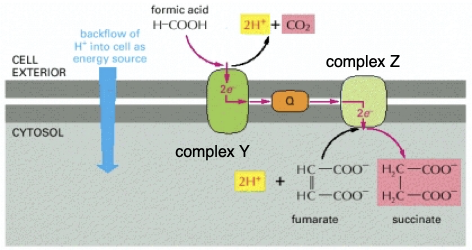
|
oxidant |
reductant |
E0’ (volts) |
|
CO2 |
Glucose |
-0.43 |
|
|
|
|
|
|
|
|
|
|
|
|
|
|
|
|
|
|
|
|
|
1/2O2 |
H2O |
0.8 |
This exercise helps you practice learning objectives: ME.32 Given a series of electron carriers and their associated reduction potentials, be able to generate from scratch a putatively functional electron transport chain (ETC).; ME.33 Explain the thermodynamic principle underlying the sequential ordering of electron carriers in a functional electron transport chain (ETC).; ME.34 Describe the molecular make-up of the components of typical electron transport chains. What are they made of, and how do you expect them to behave and interact with the molecules they encounter?
10. Why: This is another exercise that tries to get you to focus on the integration of lessons; to stitch together individual lessons into the “big picture” that will form the basis of lasting lessons.
How to practice: Get out your sketchbook. Create a picture model that includes what you know about the the utilization of the following two metabolic fuel and carbon sources: Carbohydrates (e.g. glucose) and Lipids (fatty acids). The model should include - at a minimum the following features:
-
-
- The starting fuel sources
- A representation of the main pathways of oxidation
- Modes to recycle NAD+
- Something depicting the flow of electrons from source to terminal electron acceptor
- Something depicting the flow of carbon from source to waste (assuming full oxidation)
- Something depicting possible routes of carbon from fuel to other compounds
- Highlighting two reactions in more detail that are intimately linked to “extracting” energy from the fuel and transferring the energy to ATP
- Key connections between glycolysis, TCA cycle and respiratory chains
-
This exercise helps you practice learning objectives: ME.16 Apply the concept of the “conservation of mass” to metabolism by describing the different forms mass takes as it enters and leaves the cell (e.g. input: reduced molecules like glucose, lipids, proteins, etc. & output: oxidized molecules like CO2, H2O etc.).; ME.15 Apply the concept of the "conservation of energy" to central metabolism. Follow energy from "sources" of electrons with relatively low reduction potentials to "sinks" with higher redox potentials, describe the major transfers of energy and how this energy is "stored" at each stage.
11. Why: The ATP synthase is a key enzyme in the production of ATP. Let’s get to know it a little better.
How to practice: Watch the following animation that was recommended in the reading. (https://www.youtube.com/watch?v=PjdPTY1wHdQ)
a) Then, explain why ATP synthase is considered to be a complex molecular machine.
b) Summarize what reaction this enzyme catalyzes.
c) Describe the energy transformations that are involved in chemiosmosis.
d) ATP synthase can also run in reverse - this surprises many people. What conditions facilitate the reverse reaction (see animation)? What pools are regenerated and which are depleted as a consequence of the reverse process?
e) The ATP synthase
This exercise helps you practice learning objectives: ME.39 Create a conceptual diagram linking various modes of ATP synthesis with diverse uses of ATP in the cell that highlights the concepts of an "ATP pool" and the role of ATP as a short-term energy carrier.; ME.40 Compare and contrast the three forms of ATP production - substrate-level phosphorylation, oxidative phosphorylation and photophosphorylation.
12. Why: This exercise returns us to the beginning of the discussion of metabolism. Here, I tell a story of the burger as it goes through your digestive system. Follow the story drawing a picture as we go that depicts what’s going on. Answer the questions as they are posed. You should start to see how material from day 1 of BIS2a through today’s lecture help explain something we take for granted.
How to practice: I’d like for you to return to the hamburger from class. Start by imagining the burger as a composite of the four major biomolecule types that we discussed now long ago (i.e. carbohydrates, lipids, and proteins). Can you picture each of these in your mind when you picture the burger? Try. Now imagine taking a bite (if you’re vegetarian or vegan, picture your favorite plant-based protein patty). You chew that bad boy up, breaking the material into smaller bits. Almost immediately enzymes are secreted in your saliva to start breaking up some of those biomolecules (particularly the carbohydrates). You swallow and the food hits your stomach. A big pH change! How does that influence the enzymes that were in your saliva (you may/should be able to make some reasonable predictions with explanations at the molecular level)? What does that acid do to some of the biomolecules from the burger?
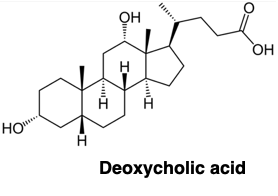
The food passes from the stomach and into the small intestine where secretions from the pancreas and liver include more enzymes that break down carbohydrates, lipids and proteins and bile acids. The bile acids, like deoxycholic acid (pictured above), which are partially hydrophobic and partially hydrophilic help to break up lipids into more soluble droplets by interacting with the lipids with their hydrophobic “parts” and water with their more hydrophobic functional groups. The pancreas also secretes small proteins called hormones (one depicted here) that will act as signaling molecules telling other cells about the status of lipid, carbohydrates, and proteins (we’ll talk more about this later). How did these proteins get “secreted”? They were made in a cell and are now in a big tube?
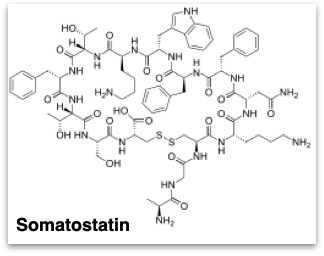
Moving on, the bits of food, now broken down into much smaller units must be absorbed by the cells of the small intestine. There must be some transport mechanism for getting the food molecules transported into cells across the plasma membrane that we see organized into folded membrane “fingers” called the microvilli. Humm. . . why might have Nature evolved these cells with many folds in the plasma membrane?
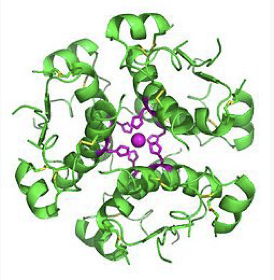
Once in the cells, the bits of food need to be further processed and utilized for energy and raw materials for building new cells. Can you imagine how that might happen? By the way, there are microbes in the gut who also want to take some of that food you ate. They also need to transport things into their cells? Is this going to be an active or passive transport? What happens to glucose, for instance, when it gets into any of these cells? Oh, and is there a way to imagine how much energy might be available in that burger (perhaps with a comparison to a poor gummy bear?).
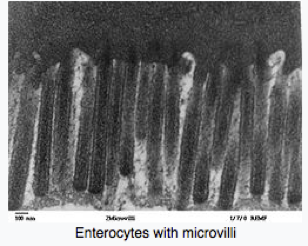
This exercise helps you practice learning objectives: There are no specific learning objectives for this exercise. Rather it’s an attempt to help you link many of the stories we’ve discussed in a familiar context.
|
oxidant |
reductant |
n (electrons) |
Eo´ (volts) |
|
NAD+ + 2H+ |
NADH + H+ |
2 |
-0.32 |
|
NADP+ + 2H+ |
NADPH + H+ |
2 |
-0.32 |
|
Complex I FMN (enzyme bound) |
FMNH2 |
2 |
-0.30 |
|
Lipoic acid, ox |
Lipoic acid, red |
2 |
-0.29 |
|
1,3 bisphosphoglycerate + 2H+ |
glyceraldehyde-3-P + Pi |
2 |
-0.29 |
|
Glutathione, ox |
Glutathione, red |
2 |
-0.23 |
|
FAD (free) + 2H+ |
FADH2 |
2 |
-0.22 |
|
Acetaldehyde + 2H+ |
ethanol |
2 |
-0.20 |
|
Pyruvate + 2H+ |
lactate |
2 |
-0.19 |
|
CoQ (Ubiquinone - UQ + H+ |
UQH. |
1 |
0.031 |
|
UQ + 2H+ |
UQH2 |
2 |
0.06 |
|
Dehydroascorbic acid |
ascorbic acid |
2 |
0.06 |
|
Ubiquinone; oxidized form |
Ubiquinone; reduced form |
2 |
0.10 |
|
Complex III Cytochrome b2; Fe3+ |
Cytochrome b2; Fe2+ |
1 |
0.12 |
|
Complex III Cytochrome c1; Fe3+ |
Cytochrome c1; Fe2+ |
1 |
0.22 |
|
Cytochrome c; Fe3+ |
Cytochrome c; Fe2+ |
1 |
0.25 |
|
Complex IV Cytochrome a; Fe3+ |
Cytochrome a; Fe2+ |
1 |
0.29 |
|
Complex IV Cytochrome a3; Fe3+ |
Cytochrome a3; Fe2+ |
1 |
0.35 |
|
Cytochrome f; Fe3+ |
Cytochrome f; Fe2+ |
1 |
0.37 |
|
Nitrate |
nitrite |
1 |
0.42 |
|
Photosystem P700 |
. |
. |
0.43 |
|
Fe3+ |
Fe2+ |
1 |
0.77 |
|
1/2 O2 + 2H+ |
H2O |
2 |
0.816 |
PRACTICE EXAM QUESTIONS
Question Q14.1
Q14.1 An organism is able to utilize methanol as both a carbon source and as an electron donor. Given the following electron carriers and their E0’ in e-V, which of the following compounds would result in the greatest release of energy if it served as the terminal electron acceptor? (Note the E0’ values in the table on the right are not in order, so reorganize the table first!)
A. NO3-
B. NO2-
C. fumarate
D. Fe3+
E. NAD+
NO3-/NO2- (+0.42) 2 e-
Fe3+ /Fe2+ (+0.77) 1 e-
TMAO/TMA (+0.13) e-
CO2/methanol (-0.38) 6 e-
Fumarate + H+/succinate (-0.03) 2 e-
NAD+/NADH (-0.32) 2 e-
Question Q14.2
Q14.2 Some pathogenic microbes resist the immune system by finding a way to live in nutrient (glucose) poor environments. A key thing that helps them survive is a two step metabolic pathway that cuts across the TCA cycle (See Figure below). It is thought that instead of glucose these organisms eat fatty acids in the form of their breakdown product acetyl-CoA. How does this "new" metabolic pathway help the organisms survive?
A. It feeds more acetyl-CoA into the TCA cycle thus allowing more energy to be made by electron transport and oxidative phosphorylation
B. It allows the two carbons of acetyl-CoA to bypass the two decarboxylations in the TCA cycle and make them available for making phosphoenolpyruvate to make more glucose.
C. It makes the TCA cycle more efficient by skipping two steps.
D. It helps conserve the GDP that would otherwise be used in the conversion of succinyl- CoA to succinate for nucleotide biosynthesis.
E. It reduces the buildup of NADH in the cell, reducing the risk that the high-energy electrons will cause damage.
